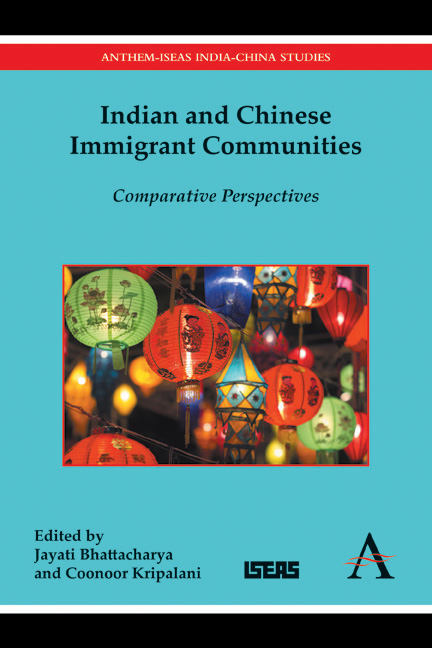Book contents
- Frontmatter
- Contents
- Foreword
- Acknowledgements
- Introduction
- Section I Historical Antecedents and the Question of Nationality
- Section II The Meeting Ground: Indians and Chinese in Southeast Asia
- Section III Indians in China and Chinese in India
- Section IV Across the Globe: Indian and Chinese Diasporas
- Postscript Shifting Worlds and Changing Identities: The Reshaping of the Chinese-Indian Communities in India after the 1962 “Sino-Indian Incident”
- List of Contributors
- Index
Introduction
Published online by Cambridge University Press: 05 December 2015
- Frontmatter
- Contents
- Foreword
- Acknowledgements
- Introduction
- Section I Historical Antecedents and the Question of Nationality
- Section II The Meeting Ground: Indians and Chinese in Southeast Asia
- Section III Indians in China and Chinese in India
- Section IV Across the Globe: Indian and Chinese Diasporas
- Postscript Shifting Worlds and Changing Identities: The Reshaping of the Chinese-Indian Communities in India after the 1962 “Sino-Indian Incident”
- List of Contributors
- Index
Summary
Migrations and transnational interactions carry with them numerous tales of differences and dilemmas, conflicts and coercion, encounters and integration. The traditional boundaries of language, culture and ethnicity are challenged and negotiated to yield newer forms of identity and consciousness, which thrive with their own sense of uniqueness and integrity. The increasing mobility of large-scale flows of capital, goods and people brings to the fore the complexities of transnational players on the regional, national and international levels. The “post-colonial deconstruction of residual Eurocentric epistemologies,” as argued by some scholars, also brings in the question whether the “post-Westphalian” era “marks the end of the nation-state.” The complexities of spatial identities that then arise need to be addressed in multidisciplinary paradigms. Recent works in the humanities and social sciences have highlighted the importance of researching these interactions in various forms and over diverse geographical spaces. While a number of researches have been published on individual diasporas, there are few examples which incorporate a comparative approach among the diasporas in terms of lived spaces, economic networks, cultural interactions or religious synergies. This volume deals with two of the largest diasporas in the world: overseas Chinese, reportedly forty million–strong worldwide, and overseas Indians, who are said to number a little over half that at approximately twenty-two million.
Though diverse geopolitical spaces have been addressed in this volume, the main focus has been the Southeast Asian region, as can be seen from the larger number of articles in that section. This region constitutes a veritable “contact zone” for the two communities, with centuries of interaction providing a fertile ground for a comparative framework and opportunities to explore the relationship between India and China through their respective diasporas. This regional focus also emphasizes how the notions of migration, diaspora and cultural contact have constituted the core of the Southeast Asian identity.
- Type
- Chapter
- Information
- Indian and Chinese Immigrant CommunitiesComparative Perspectives, pp. xiii - xxiiPublisher: Anthem PressPrint publication year: 2015

